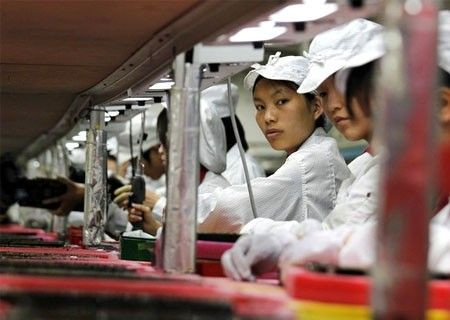China Promotes Policies To Urge Manufacturers In Expensive Coastal Regions To Move Inland Rather Than Abroad

SHANGHAI — China will offer preferential policies to encourage manufacturers to move from the southeast of the country to inland areas, in an attempt to slow an exodus of factories from areas like Guangdong, where labor and other costs have risen sharply, to cheaper countries like Vietnam, Bangladesh and Cambodia.
A spokesman for China’s ministry of commerce said that policies were introduced earlier this month, and others would be drawn up, with the aim of persuading exporters in the processing industry to move to central and western China, rather than going abroad.
Shen Dangyang said at a news conference that a slowdown in processing is the main reason for a slump in China’s foreign trade in recent months, the official Global Times reported Wednesday. While exports have rebounded in yuan terms in the past two months, Shen noted that processing exports were down 8.2 percent year-on-year in April, compared to a 4.1 percent rise in yuan terms for overall exports the same month.
There are few reliable figures on how many companies have moved out of China in recent years. But with manufacturing wages growing at around 10 percent annually up to 2015, according to some estimates, labor costs in south and eastern coastal regions, particularly Guangdong, Zhejiang, Jiangsu and Shanghai, are now comparable with poorer parts of Europe, while other costs, including rent, have also risen. Stricter enforcement of environmental regulations has also added to costs – and a growing number of companies in industries such as textiles and low-end electronics have moved to Southeast Asia or Bangladesh.
Last year, Microsoft laid off 9,000 workers at its Nokia plants in Beijing and the Guangdong city of Dongguan, and relocated some production to Vietnam. And Taiwanese textile investors in Dongguan also told International Business Times recently that an increasing number of their compatriots were moving to either Bangladesh or Cambodia.
The Chinese government has long been seeking to promote investment in central and western China, and to encourage some lower-end producers to move inland. Shen, the ministry of commerce spokesman, said that approval processes for businesses in these regions would be simplified, and preferential policies on land use and financial support introduced.
“We hope we can slow the relocation and keep them in China,” Shen said, according to the Global Times.
The paper quoted commerce ministry figures as showing that foreign investment in western China rose faster than in other parts of the country in the first four months of this year, growing by 36 percent year to $3.66 billion. And it cited an official in charge of promoting small and medium enterprises as saying that some 1,000 companies are expected to move inland annually in the coming years.
Yet, while some companies have already moved to central or western China – which is home to factories for a number of major international car manufacturers, as well as aerospace industries – some manufacturers say it remains harder to find skilled workers in these regions.
Some labor brokers in cities like Shenzhen in Guangdong, which is trying to move up the value chain and away from low-end manufacturing, have sought to recruit migrant workers in the city and persuade them to move inland. However, while some of the tens of millions of migrant workers in China's coastal cities may be tempted by the idea of moving closer to their home areas, others prefer to stay in the more advanced urban areas of the south and east, and are willing to take jobs in new service industries in order to stay there, if their factories close down.
But some economists have warned that China should not move too fast in rebalancing away from manufacturing towards the service sector, saying industrial production is on average more economically productive, while workers in service industries now often earn lower wages in China than those working on the factory floor.
And many foreign investors say that despite rising costs, they are still attracted to southeast China by the fact that its infrastructure is often better than that in many south or southeast Asian countries. The government is also seeking to improve transport and other infrastructure in inland and western areas – though it acknowledges that in some parts of the country there is still a long way to go.
© Copyright IBTimes 2024. All rights reserved.





















